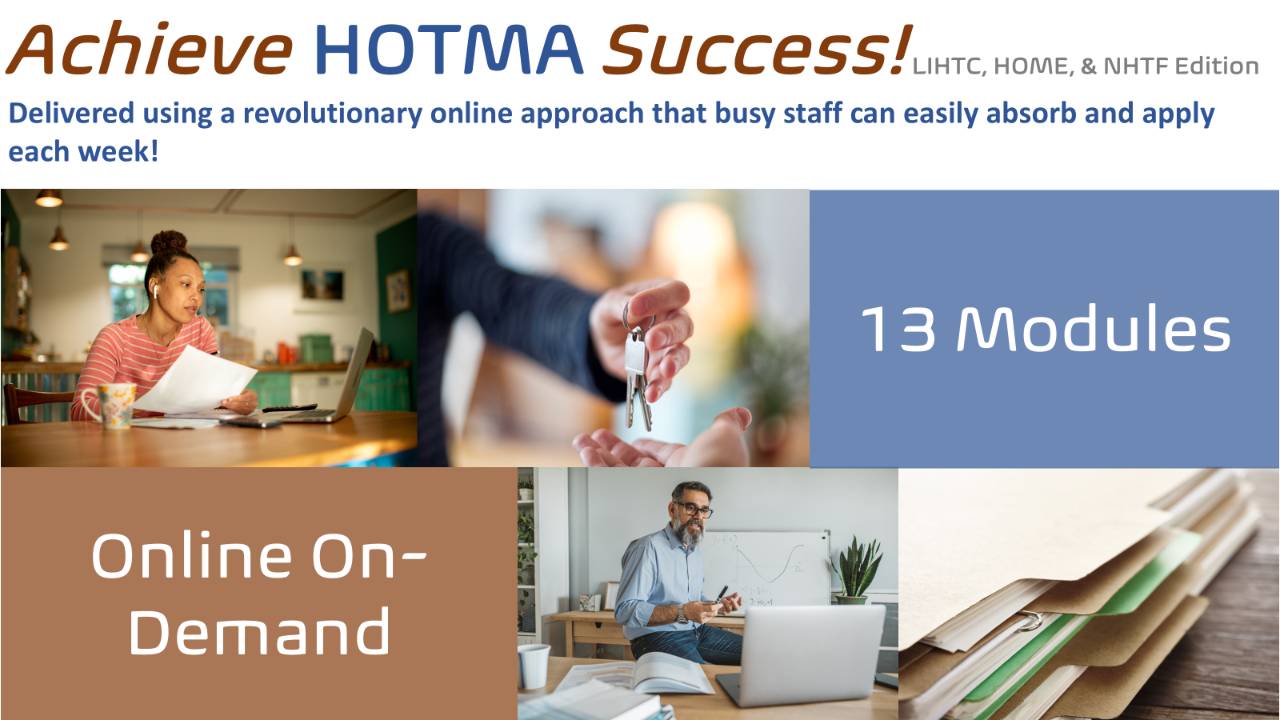Article | Reduce, Reuse, Resyndicate | Part 2
Sep 07, 2022
As many tax credit properties age, the option presents itself to plan an acquisition and rehab. The new costs can become the basis for more tax credits. This series addresses some common questions that arise when credits are "resyndicated" in this way.
Series Outline
Part 1: Introduction
Part 2: Qualifying Households
Part 3: Income Limits and Rents
Part 4: Students
Part 5: The Available Unit Rule
Question 4| Are household qualification rules different for resyndications than for other acquisition/rehabs?
Answer | Yes, in at least one crucial way. According to the 8823 Guide from the IRS, “households determined to be income-qualified for purposes of the IRC §42 credit during the 15-year compliance period are concurrently income-qualified households for purposes of the +30-year extended use agreement. As a result, any household determined to be income qualified at the time of move-in for purpose of the extended use agreement is a qualified low-income household for any subsequent allocation of IRC §42 credit.”
The guide goes on to illustrate:
“An owner received IRC §42 credits to construct new low-income housing. The owner placed the buildings in service in 1991 and started claiming credits the same year. The 15-year compliance period ended December 31, 2005. In 2007, the owner applied for and received an allocation of credit to rehabilitate the existing low-income buildings. The rehabilitation is completed and the owner starts claiming the credit in 2009. On February 1, 2004, John and Mary are determined to be income qualified and move into a low-income unit project. John and Mary timely complete their income recertification each year 2005 through 2008. The unit has always qualified as a low-income unit, except when the unit was not suitable for occupancy during the rehabilitation period. The unit is a low-income unit on January 1, 2009, when the owner (a calendar year taxpayer) begins claiming the credit. If the unit was determined to be an over-income unit under IRC §42(g)(2)(D) at the time of the household’s last income recertification in January of 2008, then the owner is subject to the Available Unit Rule." The Guide adds this note: "Similarly, vacant units previously occupied by income-qualified households continue to qualify as low-income units if the units are suitable for occupancy. However, the owner is subject to the Vacant Unit Rule.”
In summary, people who income qualify for tax credits for the first set of credits who are in place at the start of the second set of credits automatically continue to qualify as tax credit qualified for the second set, regardless of income at the time of the start of new credits. Sometimes this is referred to as “grandfathering” those residents into the new credits.
Reference: 8823 Guide 4-27
Question 5 | What paperwork is required to prove the household is qualified?
Answer | The IRS does not specify, so state HFA and investors rules generally will guide an owner in this regard. Seek their guidance.
Costello recommends
-
We believe that the original file proving that the household qualified for the first set of credits should be retained with the files establishing the second set of credits. If an owner can locate this file, and it is sufficient to establish eligibility at move-in, it is significantly less of an administrative burden on the owner/agent and the household than the following suggestions. Our observation of many resyndications in recent years has moved us to strongly recommend this procedure, where the state HFA allows it.
-
If the above is not available, or the original file is significantly flawed, the principles for move-in file paperwork compliance laid out in the 8823 Guide indicate that a subsequent recertification file demonstrating that the household qualified under limits in effect at the time of recertification establishes a point that the household qualified, even if after move-in.
-
Alternatively, a certification created retroactively back to the move-in date can accomplish the same thing. Either approach in cases where the original file is missing or insufficient should establish that they qualified at some point during the first extended use period, and continue to qualify for the second set of credits.
-
Some older files do not establish household eligibility, as verification requirements have become more clearly understood in recent years and some files will simply have significant problems that are discovered upon review. In order to best ensure a clean file that meets modern verification standards and bolsters investor confidence, the owner may consider doing a complete certification on in-place households, as is done with other acquisition/rehabs. If the household qualifies under current income limits for the new credits, no further work is necessary. If they do not qualify, then the above paperwork, along with a note explaining why the older paperwork is being used, can be placed in the file to take advantage of the grandfathering provision. Of course, the old paperwork will have to be reviewed to make sure that it is sufficient.
References: 8823 Guide 4-35 & 36
Up Next: Why is my state telling me I have to drop my max rents when we resyndicated? And more!
More information on an amazing training bundle is HERE! Looking for quality online on-demand Affordable Housing training for new managers? Or a great refresher for more experienced ones? Check out our Jump Start! New Manager Bundle. The bundle includes Qualifying Households for the programs that you need and Fair Housing Fundamentals.

There is a very good chance that the topic of this post is covered in an online on-demand course at Costello University.
Stay connected with news and updates!
Join our mailing list to receive the latest news and updates from our team.
Don't worry, your information will not be shared.
We hate SPAM. We will never sell your information, for any reason.






